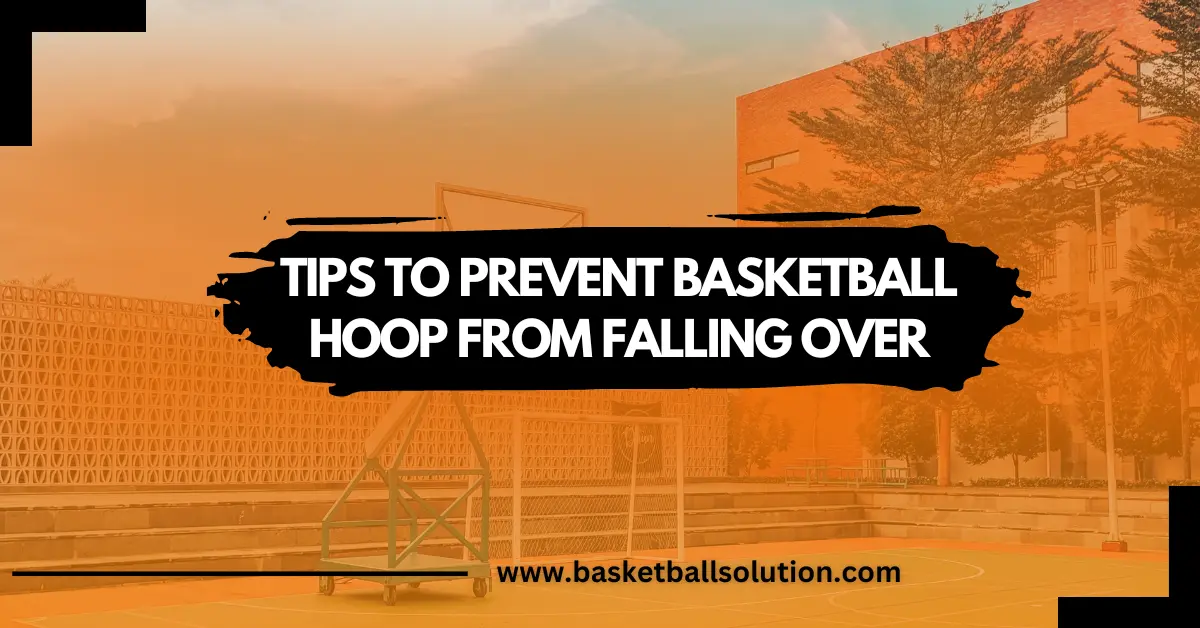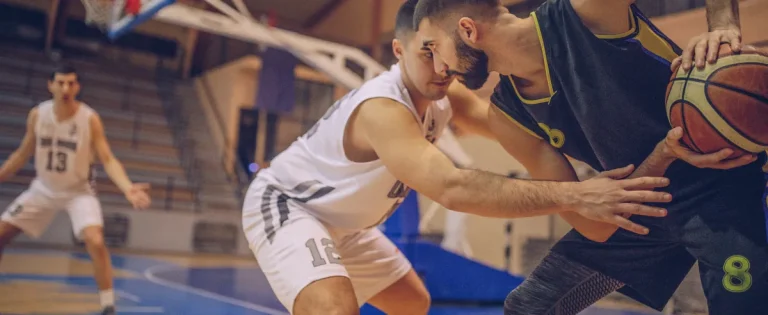Tips to prevent basketball hoop from falling over NBA
Having a basketball hoop at your place enhances your residence’s beauty, but you need to take steps to prevent it from falling over. The portable basketball hoop has several positive aspects, including being easily transported and adjustable without drilling. If you frequently experience storms and high winds, your home may be threatened.
A fallen hoop can damage your property and sometimes cause harm to players. While there are solid solutions for basketball hoops, they may not overcome natural calamities. People often put bulky material over the base to enhance its grip on the ground, but this is a temporary trick. You need to go above and beyond to reduce this by employing certain methods.
how to Prevent a portable basketball hoop from Falling Over?
Preventing a portable basketball hoop from falling over involves a few key steps:
Replace Water with Sand in the Basketball Base
Opting for a water-filled base is preferable when filling portable basketball hoop bases due to its continuous availability and ease of relocation. Water is the go-to choice for those who may need to move their hoop.

From a technical standpoint, sand is approximately 45% denser than water. This density makes a sand-filled basketball hoop base more stable than its water-filled counterpart, reducing the risk of tipping over.
Adding Base gel in hoop base
Adding base gel to the hoop base is an alternative to the traditional sand-filled base. It functions similarly to sand, enhancing stability. For a water-filled base, incorporate half a liter of base gel to increase water density and improve hoop stability.

To revert the water-filled base to its liquid state, add a solution of water and salt. The transformation occurs within minutes. It’s important to note that adding base gel to sand is discouraged as it increases density, making the hoop difficult to move.
Additional Weight
Additional weight means people place additional weight over the base, including cement bags, bricks, and blocks. This technique primarily causes harm.

Suppose you place cement bags on the base; in the rain, cement can spread all over the base and become hard. It will damage the hoop base, which will be useful for nothing.
Pole Collar Strapping
The pole collar method complements the base trap technique for securing a portable basketball hoop. Serving as an extension of the base strap approach, it adds an extra layer of stability to prevent the hoop from tipping over.
To implement this method, use a three-point safety strap that allows for adjustable fastening. Connect one end of the strap to the hoop pole, similar to the base strap method. The other two ends should be attached to ground anchors.
By incorporating the pole collar strapping, you enhance the hoop’s resistance to adverse weather conditions, ensuring the pole remains straight. This comprehensive approach fortifies both the base and pole, maintaining a secure grip on the ground and preventing potential tipping hazards throughout the season.
Basketball Pro Base Method
The Basketball Pro Base Method involves adding base gel to the hoop base, similar to the sand-filled base. The base gel functions similarly to sand, increasing the density of the water-filled base for added stability. To implement this method, mix half a liter of base gel into the water-filled hoop base.
The gel enhances stability without the drawbacks associated with sand. It can be easily transformed back into a liquid state by adding a solution of water and salt, allowing for flexibility in maintaining the hoop.
Testing to ensure stability and safety
If you feel any deficiency, cross-check all the steps taken for stability and fix the issue if it exists. Inspect the hoop and base from various angles to ensure stability and safety. Evaluate the hoop by applying weight to it, and check the backboard by tapping on it.
A basketball hoop at your place is a gesture of luxury and it demands regular maintenance to keep its performance considerably good. Sometimes basketball hoop heights are longer than individual heights so people hire professional caretakers for basketball hoop maintenance.
FAQs
How much sand do I need for the basketball hoop?
Buy 10 packets of 50-pound sandbags from a construction supply store if your basketball hoop foundation is 35 gallons. Otherwise, change the amount of sand purchased to meet your needs.
Is base gel better than sand?
It is determined by the court’s position and the consumer’s needs. Sand is thicker than base gel, more difficult to move, and makes a mess. People unable to deal with such issues pick gel for the base; otherwise, go with a sand-filled hoop base.
How to lay down a basketball hoop for a storm?
Secure your basketball hoop during a storm by lowering it, adding weight to the base, removing the net and ball, and tightening all bolts. Consider using a cover or finding shelter for added protection.
How to secure a portable basketball hoop on concrete?
To secure a portable basketball hoop on concrete, use an anchor kit made for concrete surfaces. Drill holes, insert anchors, position the hoop base, and screw it in securely. Confirm stability for safe play.
Conclusion
Having a basketball hoop at your preferred location is a blessing but requires frequent cleaning. We have all stated suggestions that will aid you in keeping the basketball hoop from tumbling over. All methods have benefits and drawbacks, but they all offer optimal stability. There are many options for basketball hoops that cost you differently from low to high price range. You can select one according to your budget. Each option has a different level of strength to survive.

Passionate basketball player striving for excellence on and off the court. Dedicated to the game since youth, I have honed skills through years of practice. Explore my journey, gear reviews, and dunking tips. Let’s elevate our game together!







